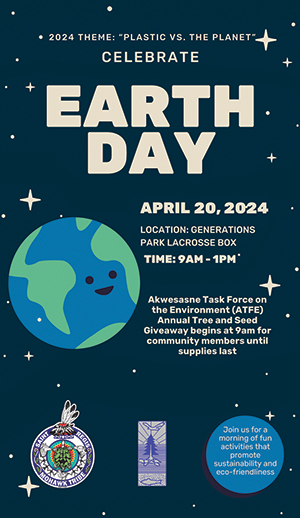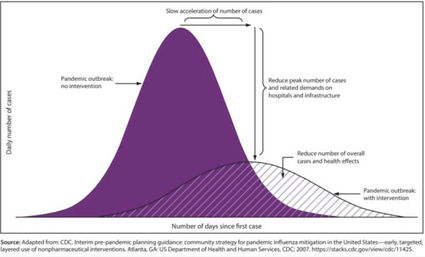COVID-19 has potential to hospitalize over 1,000 in Akwesasne, kill as many as 240 without serious preventative measures
By Andy Gardner
CANTON. Public health officials recommend everyone use social distancing in all daily activities - stay home more often and keep your distance. Social distancing means staying away from crowds and others' personal space to reduce the spread of the novel corona virus, and the respiratory disease it causes, COVID-19.
Social distancing measures can reduce the spread of the virus by decreasing the frequency and duration of social contact among persons of all ages. These measures limit face-to-face contact, which reduces person-to-person transmission. Now is the time to proactively put in place strategies that will help control the spread of COVID-19, public health officials say.
On Monday, March 16, Gov. Andrew Cuomo said novel coronavirus has the potential to infect 40% of New York state's population, a rate that health experts have warned could actually apply to the entire United States.
This estimate will assume a population of 20,000 for all of Akwesasne. The Mohawk Council of Akwesasne on their website reports 12,000 people live on their side and 11,000 live on the St. Regis Mohawk Tribe side, with some members registered to both. It says about 1,800 live outside of Akwesasne.
So estimating a population of 20,000 at a 40% infection rate, that means 8,000 Akwesasne residents could contract COVID-19. The estimate is that 80% of cases will be minor, and 20% will require some form of hospitalization. That's 1,600 people requiring a hospital stay, and possibly an ICU bed and life support, far beyond the capability of local hospitals.
And current estimates put the COVID-19 death rate at 1 to 3%, so that means 80 to 240 in Akwesasne could succumb to the disease in the next 12 to 18 months.
The coronavirus death rate is far above the flu death rate. Due to the availability of vaccines, the flu kills about one-tenth of 1% of the people who get it.
So why social distancing and what does it mean?
"Our healthcare system does not have the capacity should we have a substantial outbreak of COVID-19. We need to act. We need to act now and fast. Without a vaccine, these strategies are what we have, and they have worked in the past" said Dana McGuire, Public Health Director for St. Lawrence County.
Social distancing is a community level non-pharmaceutical intervention, or NPI, a first line of defense in the early stages of a pandemic. "Now is the time to avoid public spaces and limit moving about. We should all stay home more often and keep our distance from others."

By implementing social distancing, we can:
1. Delay the number of confirmed cases we see.
2. Reduce the peak number of cases, thereby reducing the demand and burden on our hospitals and healthcare system.
3. Decrease the total number of overall cases and the health effects.
Social distancing measures can be implemented in a variety of community settings such as schools, workplaces, and public places where people gather (parks, religious institutions, theaters, and sports arenas).
Recommended strategies include:
1. Increase the distance between you and others to at least 6 feet.
2. Limit face to face meetings and appointments: consider email, phone, and/or online encounters

3. Modify, postpone, or cancel activities and events: consider group size and target audiences. Reduce the number of people at each offering and think about high risk populations that may be present.
4. Alter work environments and schedules: consider telework options, staggering schedules, arranging offices for increased spacing, limiting open hours, and offering open by appointment only.
5. Consider the necessity of going out: Do you need to? What essentials are needed? Can it wait?
In addition to these essential recommendations, personal and environmental NPI strategies remain just as important. Continue to use proper hand hygiene and cough etiquette, refrain from touching your eyes, nose, and mouth, self-monitor your own symptoms and stay home if you are sick, and clean and disinfect frequently touched surfaces.
The next few weeks will be challenging as regular routines will be disrupted. Implementing these strategies on a community-wide basis will be important in slowing down the person-to-person transmission, reducing the overall effects, and preventing the collapse of our healthcare system, Olzenak-McGuire said.
"If we plan ahead to prepare, and work together to support each other, we can mitigate the impact of the novel coronavirus," she said.




Reader Comments(0)